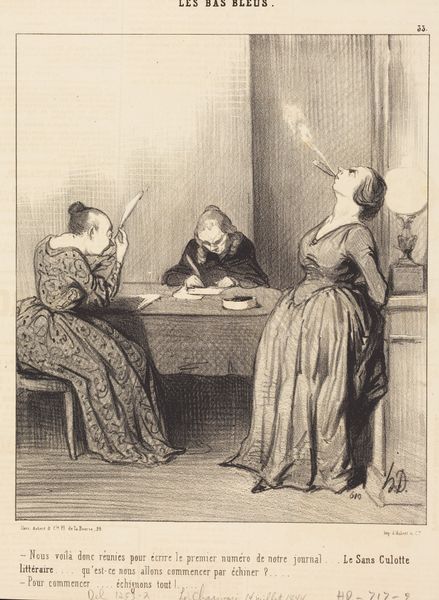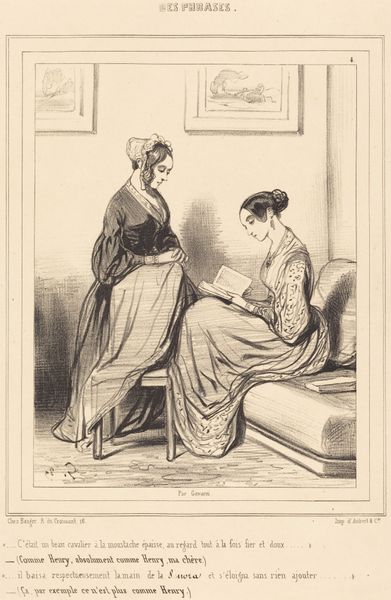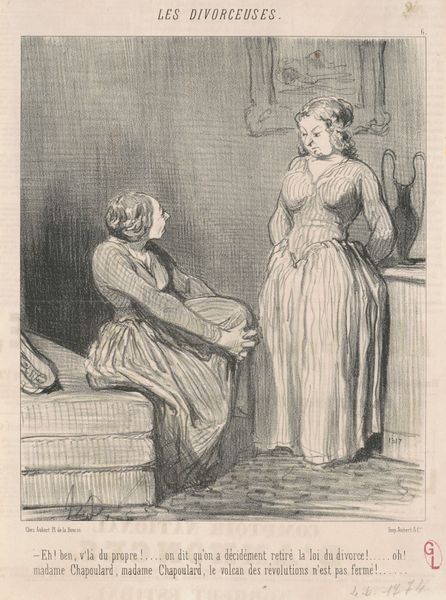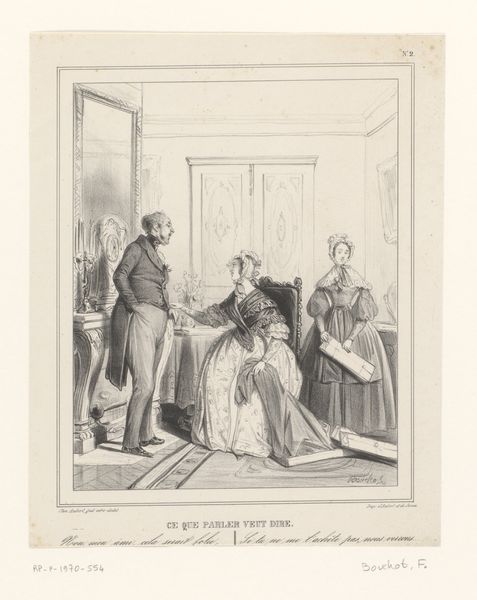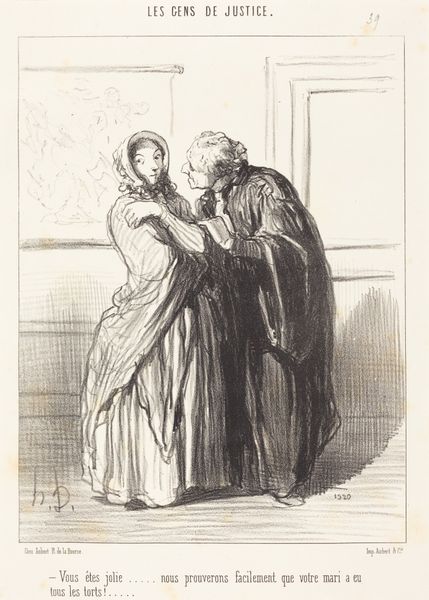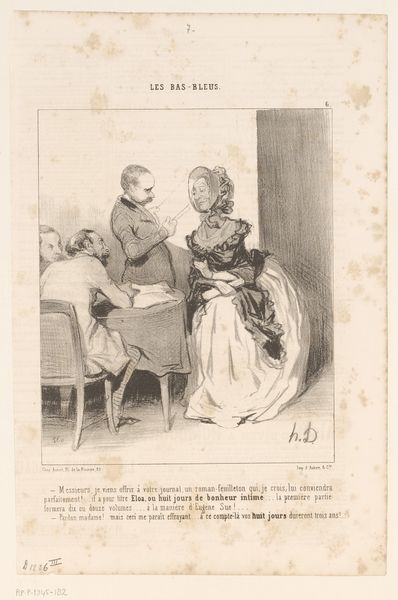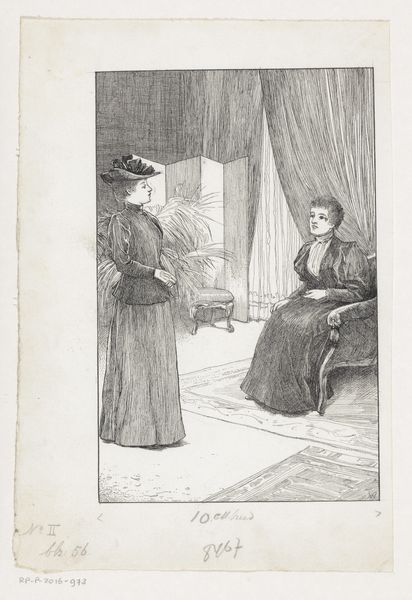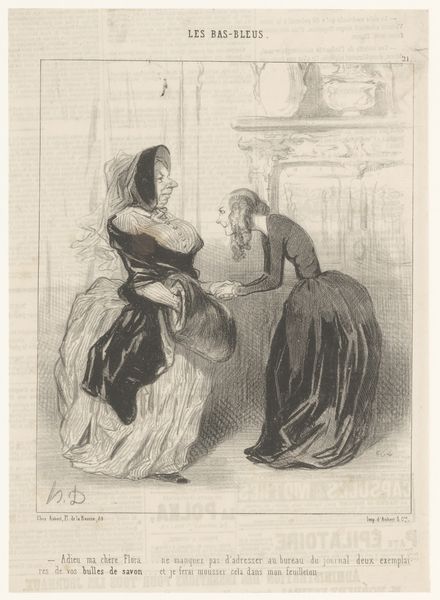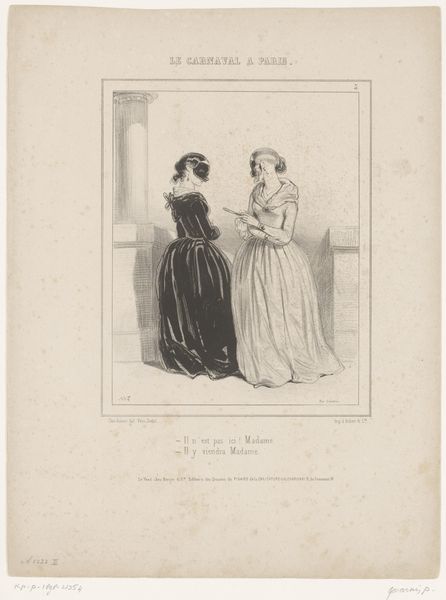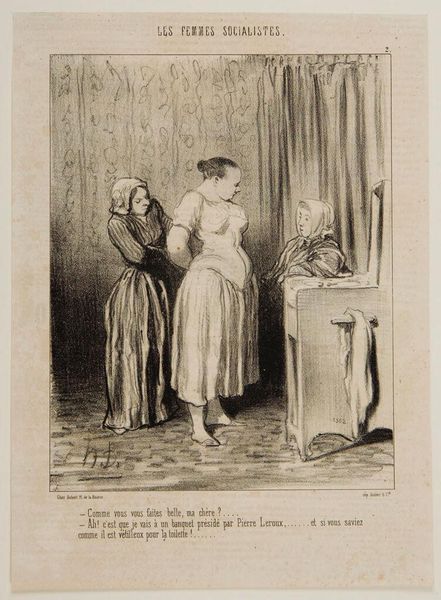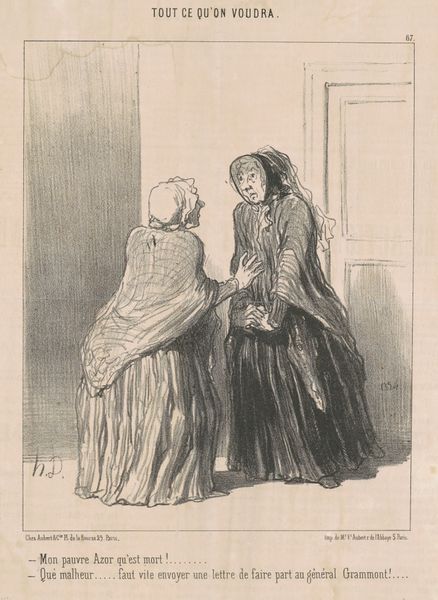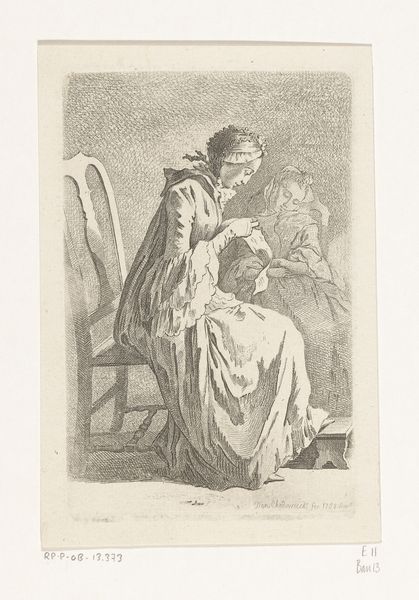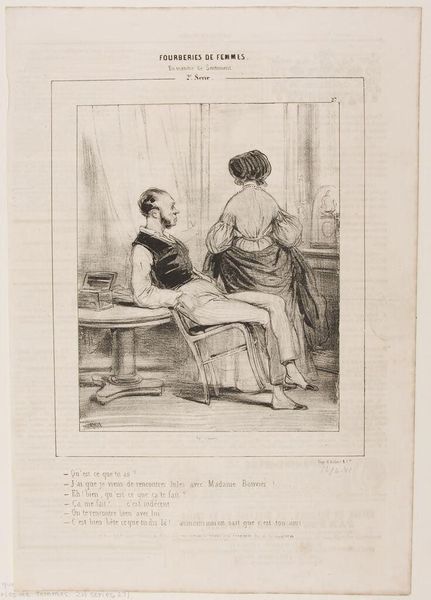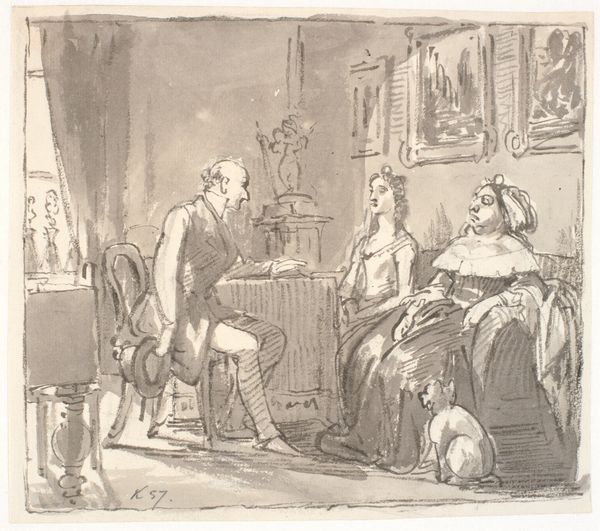
drawing, lithograph, print
#
portrait
#
drawing
#
lithograph
# print
#
caricature
#
figuration
#
social-realism
#
romanticism
#
line
#
genre-painting
Copyright: National Gallery of Art: CC0 1.0
Curator: This lithograph by Honoré Daumier, dating to approximately the 19th century, is titled "Repoussée ... une porte me reste ouverte …." It’s a compelling example of his social commentary through caricature. Editor: It certainly grabs your attention. I’m immediately struck by the melancholic figure seated in the foreground. She seems utterly defeated. The lines are stark, emphasizing the weight of her posture. Curator: Precisely. Daumier was a master of capturing the nuances of human emotion and social realities. In this piece, we see the artist's attention on social-realism through his focus on figuration and the circumstances these women are dealing with. The artwork gives the viewer an understanding of gender inequalities. Editor: The text at the bottom reveals she was rejected as a candidate for the National Assembly. The other woman, seemingly caught in a domestic chore, almost acts as a foil to the dejected figure. Is that meant to underscore the limited options for women at the time? Curator: Absolutely. Daumier frequently used his art to critique political and social injustices. He saw himself as a voice for the marginalized, in this case, likely commenting on the limited avenues for women to participate in political life in 19th century France. Editor: The setting adds to the narrative, too. A sparse interior, the picture hanging crookedly, the discarded fabrics – it all contributes to this sense of thwarted ambition and perhaps even domestic frustration. Curator: Notice also how Daumier employs line and contrast to guide our eye. The use of dark ink for the details in the foreground causes them to pop, while the overall aesthetic remains romantic and moody. This romantic-social realist depiction works in conjunction to heighten the emotional impact of the print, inviting reflection on the political landscape that restricted women’s participation. Editor: It's a powerful piece, made even more poignant knowing the context of Daumier's own history of being censored for his political caricatures. He clearly understood the power of art as a tool for social commentary and change. The themes within this artwork still remain relevant in today's society. Curator: Indeed, his legacy as a socially engaged artist is firmly established through works like this one. It prompts us to consider the ongoing struggles for equality and representation in society.
Comments
No comments
Be the first to comment and join the conversation on the ultimate creative platform.
